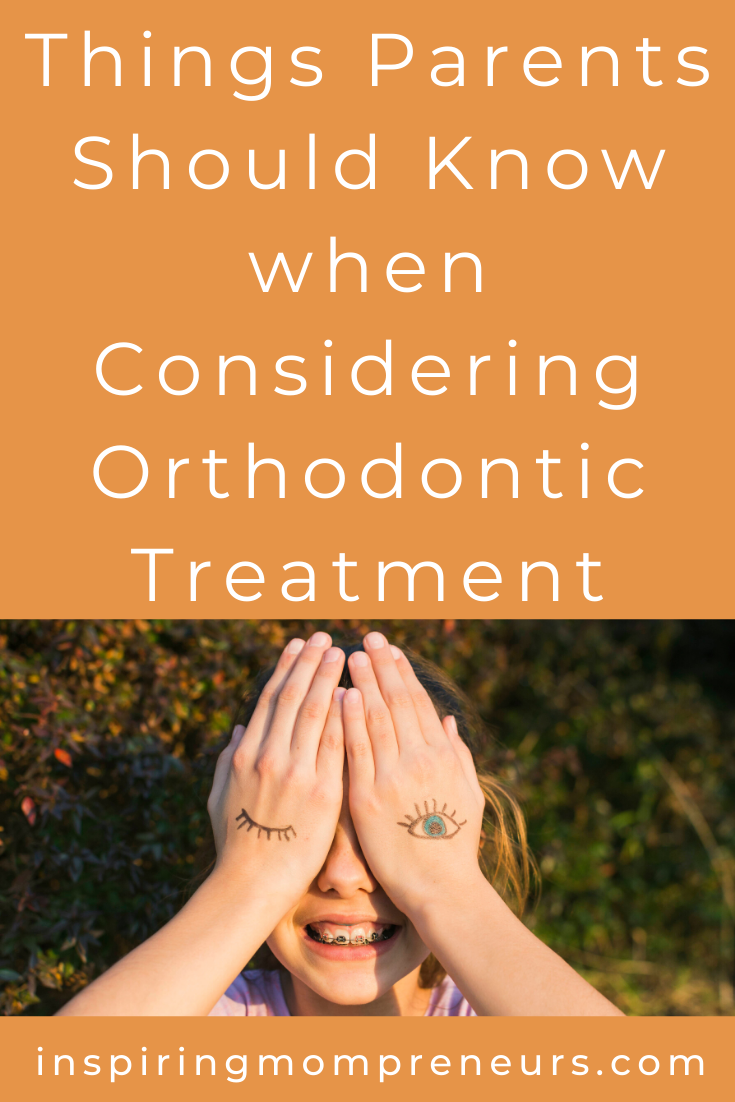Parent Guide to Orthodontic Treatment
As parents, we do everything in our power to ensure our children stay safe and healthy. And we know that good oral health is essential for our overall health, which is why we get our children’s teeth checked out on a regular basis and instil invaluable oral hygiene practices at an early age.
However, sometimes your child could experience some problems with their teeth, regardless of their good hygiene.
If you notice any problems, it might be time to take your child to an orthodontist and see whether they need treatment.
Before you do that, there are certain things you should know about this so keep on reading.

When should a child visit an orthodontist?
According to experts, every child should have an orthodontic screening by the age of seven. By then, a child will have enough permanent teeth in order to identify any issues.
Discovering potential problems on time and treating them early on can prevent their further development.
Plus, waiting for all the permanent teeth to come in can make the necessary corrections more difficult, so don’t wait too long.
However, even if your child doesn’t get checked out before they’re seven, it’s not too late seeing as how treatments usually start between the ages of nine and sixteen.
Some issues don’t require immediate attention so orthodontists take the wait-and-see approach to determine whether any treatment will be necessary.
Moreover, don’t worry even if you don’t notice any issues – your child’s dentist will notice a need for braces and will suggest that you go to an orthodontist to get their teeth checked out.
 What are the reasons for a visit?
What are the reasons for a visit?
While there are some obvious reasons why your child should visit an orthodontist such as crooked or overcrowded teeth, there are some other reasons that often get overlooked.
For example, if they start losing their baby teeth too early or late, if they are grinding or clenching their teeth or if they have difficulties chewing and biting, you definitely need an evaluation.
Furthermore, speech difficulties, mouth breathing, jaws that make sounds or shift and facial imbalance are all signs that your child might need braces.
Which issues can be prevented and fixed on time?
As any quality orthodontist will tell you, braces do not serve only a cosmetic purpose.
While they will help with teeth and jaw alignment and improve the child’s self-esteem if they were conscious about their looks, they will also improve the function of the teeth.
Fixing how the teeth fit together and the patient’s bite as well as preventing gum disease, tooth decay and all sorts of pain are all amazing perks of discovering potential issues on time.
How long does the treatment last?
The issues that need to be corrected will play the biggest part in how long the treatment will last, which means that each orthodontic plan is unique.
However, an average estimate you can keep in mind is somewhere between 18 and 36 months.
Your child will have to visit their orthodontist for checkups every six to twelve weeks while the treatment lasts.
What do braces look like?
Depending on the severity of the case, there are different types of braces your child might need.
Even though metal braces aren’t the most popular of options due to having a mouth full of metal and the overall aesthetic, most kids usually need exactly that. Brackets, wires and rubber bands will slowly help line their teeth up.
Nowadays, the wires are light and flexible, the brackets are small and they go on fast, and the rubber bands come in various colours.
In addition to metal varieties, clear and white ceramic braces are also an option. In some cases, the braces go behind the teeth and some individuals can even use clear removable braces.
How are they taken care of?
If your child needs braces, the orthodontist will probably prohibit certain foods and drinks.
Various drinks like fruit punch can stain the teeth so they need to be avoided as well as chewy treats like caramel and toffee seeing as how they can rip off the wires.
No chewing gum is allowed as well, under any circumstances.
What is more, they need to brush their teeth and floss every day. Consider getting them a travel-size toothbrush and paste so that they can always wash their teeth after a meal.
How much do they cost?
While braces might seem expensive at first glance, it’s vital to keep all the above-mentioned benefits in mind.
Paying upfront is an option but most orthodontists are happy to offer you a payment plan that will allow you to spread out the cost of the treatment.
Plus, check your health insurance to see whether that will cover at least a part of the price.
As all parents want is to keep their children happy and healthy, consulting an orthodontist as soon as you notice an issue is vital. That way, you will help prevent more serious problems and make your child’s life easier.
Are you considering getting braces for one of your children? We trust you found this parent guide to orthodontic treatment helpful.



Thanks For the Valuable Information
Absolute pleasure. Happy you enjoyed our post.